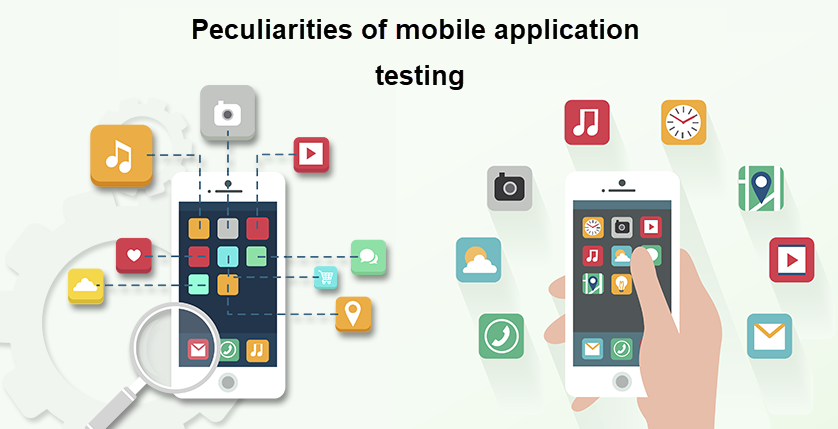Peculiarities of mobile application testing
- 13.06.2017
- Posted by: Admin

Testing mobile applications generally corresponds to the basic principles of testing. However, there is a type of peculiarity that is observed only in mobile application testing.
To understand the peculiarities of the mobile application testing, one must include the factors that differ the mobile application from the desktop, to be precise it is: specific and various operational systems for mobile platforms, various configurations, functionalities of devices such as communicators and so on.
Due to this, the mobile application approach differs a lot from the desktop ones. A big amount of nuances and requirements appears, that needs to be tested.
Peculiarities of mobile application testing
Let us look through points that should be paid attention to when testing mobile applications.Screen size and touch-interface:
- sizes of all elements of the graphic interface of the user;
- check of the usage of all active elements (buttons, links etc.);
- the speed of the feedback of the active elements must be high;
- the check that secures that after enormous amount of taps the application won’t cause crash;
- multi touch support – simultaneous tap on several buttons;
- support of the horizontal (landscape) and vertical (portrait) modes;
- check of the basic gesture support (double tap, swipe, pinch in/out and so on).
Phone resources:
- all the memory leaks must be controlled. Mostly such things happen with applications with windows that consist of a lot of information. Leaks can be present during a long work with application;
- check the invalid memory space for the operative system to function in case with the program running in active and background mode;
- the defect of the place to install and the work of the program;
- installing the SD card;
- checking the battery of the device with the running application, background running mode, with active Wi-Fi, 3G connection, without Internet network, etc.
Different screen-resolutions and OS versions:
- there is a need to check the program work on the devices with different screen resolutions. On screens with big resolutions ( Retina screen, for example) interface elements are displayed smaller, at the same time on devices with small screen resolution, interface elements can become too big;
- there is a need to check that the application cannot be installed on the devices that cannot support it. That is why it is important to check it on all the supported devices first.
Reaction on the external interruptions:
- ingoing and outgoing SMS and MMS;
- ingoing and outgoing calls;
- notifications, alarms and so on.;
- disconnection and connection to Wi-Fi. For example,the device can crash after enabling airplane mode when Wi-Fi is turned off. If the signal is lost and the operation is performed at the same time, the endless download of the program may be displayed, instead of the correct message about the lack of Internet connection;
- there are often problems with the transition to online mode after offline mode;
- disconnection and connection of the SD card;
- unplugging/plugging-in the mobile device to the charger;
- functioning of a physical keyboard (if there are any in the list of supported models);
- work in the background mode. To send in the background – the application is launched, and then the home button is pressed. As a result, when one restart the program there are errors, emergency shutdowns, incorrect display of the last open window. Also, long-term inactivity of the application causes an emergency shutdown or error;
- operation of the application after waking up;
- compatibility with other applications.

Tags
bug
bug-report
game testing
glossary
homework assessment
Lecture #1 of software testing courses
Lecture #2 of software testing courses
Lecture #3 of software testing courses
Lecture #4 of software testing courses
Lecture #5 of software testing courses
Lecture #6. Software Testing: Basics and Practice
Lecture #7. Software Testing: Basics and Practice
lecture materials
mobile testing
QA terms
qa tips for beginner
self-training
test case
test design
training organizational questions

